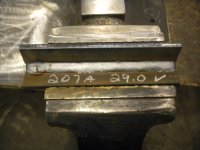CNC Dan
Veteran Member
Here's a short clip from some of the best made welding videos out there
GMAW Mig Welding | Wire Feed Welding - YouTube
Each course (mig, stick, gas, etc) runs about $25, the photography is clear enough you can actually tell what he's talking about - if that's not what you're looking for, here's a free site for ANY type of welding by a guy who does it all
Welding Tips and Tricks - TIG, MIG, Stick and a pantload of other info
Or, you could move to Tacoma - Shield has been known to help a newby or three...Steve
I can also recommend those sources of information. I bought the stick welding DVDs, and welding tips and tricks has the best videos on YouTube.
